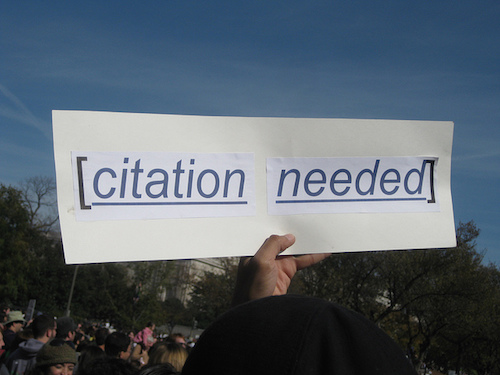Q:Should the TM or R symbol follow a protected name?
A:Only the trademark owner or their licensee uses the ™ or ®. Full stop. That is the only time these symbols should appear in writing.
This is true in both Canada and the US.
The circled R (®) means “registered trademark” and the uppercase capitalized TM (™) means simply “trademark.” You don’t need to use either in your writing unless you’re working for the company. In fact, using the ™ symbol might also imply that you have permission to use the mark (trademarked name), which might itself expose you to a legal challenge.
JUMP to shortcuts for these symbols.
[CMOS17] 8.153: “there is no legal requirement to use these symbols [® and ™], and they should be omitted wherever possible.”
Did you know that DOI is a registered trademark? Imagine the absurdity of a bibliography full of “DOI™.”
Capitalizing names that are protected by law is the end of the writer’s obligation (and by extension, the editor’s obligation), according to The Canadian Press Stylebook (CP, 16th Ed., p. 415). (They also advocate dropping creative caps; but that’s another story.) CMOS and Chicago Guide to Copyediting Fiction recommend minimalizing the excessive or awkward capitalization patterns if it would mean, for example, starting a sentence with a lowercase letter or using glaring all caps.
Those who think using the mark shows respect for the property might consider this advice from another Canadian editor, Sharon Stewart: “In general writing, it may look amateurish to other editors that have been around for a while, like you aren’t plugged into the editing world.”
“Personally, though,” says Canadian editor Barb Adamski, “if I read something that unnecessarily uses the TM symbol, I think that it’s promotional copy by the owner of the trademark and view the copy as completely biased because I feel it’s written solely to promote that product. Is that what you want your readers to think?”
Substituting a general term (generic) is CP’s preference: “pop for Coke, adhesive bandage for Band-Aid, flying disc for Frisbee.” But I’m sure you can all think of instances when the generic is more confusing or when the brand name “gives point, colour or impact to a story,” as CP puts it.
Eventually, it seems, every trade name will become genericized or lose its protection as a trade name. But those conditions are not universal. According to CP, Aspirin is still a trademarked name in Canada. Not sure what terms are still trademarked? A dictionary often indicates this, and you can check the Canadian Intellectual Property Office’s database.

Creating the symbols
MS Word has a built-in autocorrect that turns (C) into © as you type, and (R) into ® as well as (TM) into ™. If you had to turn off that feature or are not working in Word, here are a few other ways to make these symbols:
- Use the Advanced Symbol button (omega symbol) on the far right of Word’s Insert ribbon.
- Use the insert emoji/symbol key (or shortcut) on your keyboard.
- Use the “Keyboard viewer” in your computer’s OS.
- Type the unicode to insert the symbol (see table below, plus instructions).
- Type the HTML code (see table below).
| Symbol | Unicode | HTML |
| © copyright | U+00A9 | © |
| ® registered trademark | U+00AE | ® — ® |
| ™ trademark (unregistered) | U+2122 | ™ |


